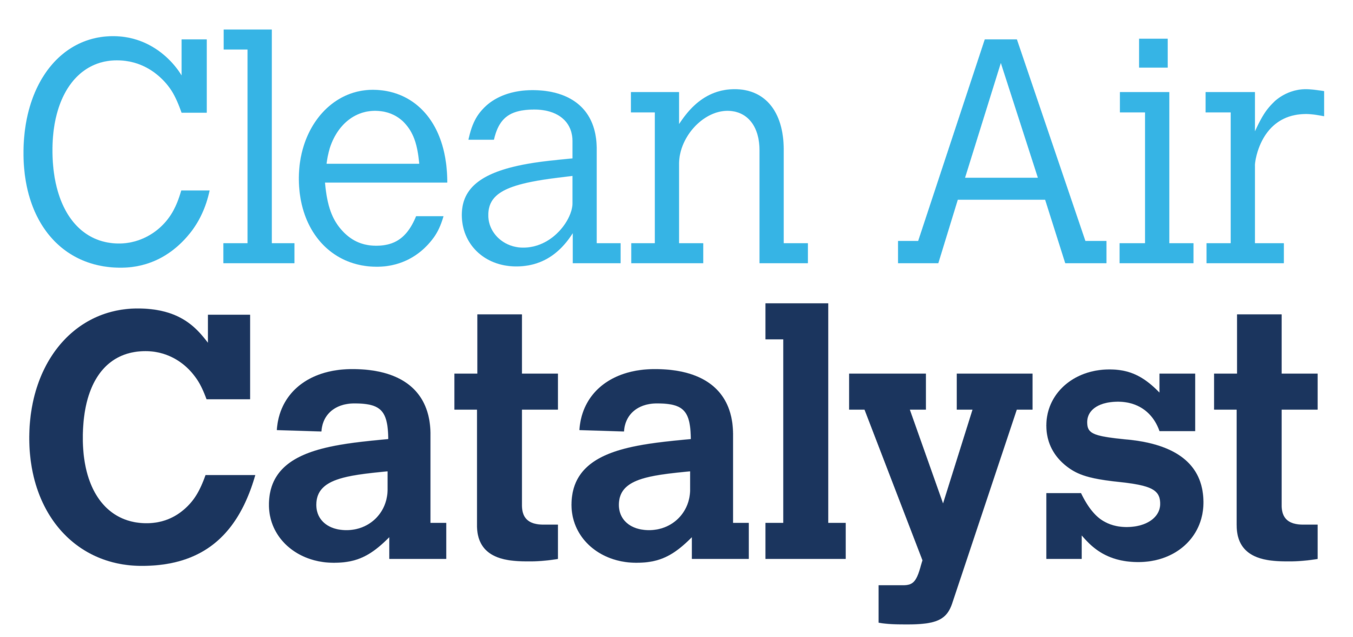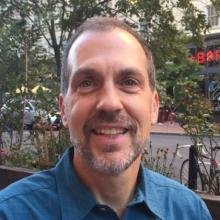Meet Our New Chief of Party, Ethan McMahon
“This work on the Catalyst interests me because it involves so many dimensions. Technology, human health, collaboration–you need all of these ingredients and more to affect change on many environmental issues.”
Ethan McMahon, Chief of Party, Clean Air Catalyst
Ethan McMahon is the new Chief of Party for Clean Air Catalyst. He brings 27 years of experience with the US Environmental Protection Agency (EPA), where he worked with cities and states to build capacity to address climate change and air pollution, and advocated to make environmental data more accessible.
What first got you interested in environmental science and what do you find most interesting about this field?
I started my career as a mechanical engineer, doing things such as evaluating alternative refrigerants. Within a few years, I learned about the impacts of climate change and realized that I wanted to apply my analytical skills to issues that make a difference. This work on the Catalyst interests me because it involves so many dimensions. Technology, human health, collaboration–you need all of these ingredients and more to affect change on many environmental issues.
I was drawn to work on the Clean Air Catalyst because the emphasis is on action. There are plenty of studies about the accuracy of air quality sensors and some studies about data management, but our focus is on finding ways to improve people’s lives in cities across the world. The Catalyst focuses on making a real impact and that aligns well with my values.
Why is open, publicly available data so crucial for solving environmental problems?
It’s hard to solve environmental issues because the causes and effects are complicated. To present a convincing case to decision-makers, you need to speak their language, using numbers and sometimes stories. But you can only crunch the numbers if you can get the data, so it’s critical that data collectors make their data accessible and usable.
If governments collect data for one purpose, it makes sense to get more value out of the data by making it available for other purposes. For example, the EPA collects data on air quality for regulatory purposes, but community groups may want to use that same data to understand if their air quality has suddenly shifted to be worse. AirNow is a great example of how the EPA makes its data available for non-regulatory purposes.
How is the Clean Air Catalyst approach innovative?
The Catalyst has three pilot projects: Jakarta, Indonesia; Indore, India; and soon, a third city in Africa. That enables us to see what is common to all of the cities and what is specific to their structure and culture.
There are two important innovative aspects to the Catalyst. First, we engage with stakeholders so they understand what pollution sources are near them and describe the resulting health impacts. But we go beyond this engagement and ask people to tell us what they see in their daily lives. For example, people in one pilot city–Indore, India–told us that there’s a construction boom because corporations are moving their offices out of large cities to their city. This source of pollution was not identified in past evaluations and our dialogue helped everyone understand the situation on the ground.
Second, we’re looking for interventions that will yield benefits across several areas. Air quality, human health, climate change, and gender and equity issues–we’re seeking actions that can address several of these sectors at the same time.
Finally, even as the local coalitions select these interventions, we’re seeking to understand the root causes of pollution so they are truly effective. Some pollution, like that from power plants, is well understood, but it can be hard to change because of the capital investments required. Some less obvious changes could be impactful as well. For example, instead of burning solid waste in the street and creating smoke near people’s homes, cities could collect the waste and process it at the municipal level. We’re seeking solutions that are sustainable and feasible.
What are some goals you have for the Clean Air Catalyst program?
I want the Clean Air Catalyst program to help cities improve their air quality in ways that are effective and sustainable. We’re using a lot of innovative methods in our pilot cities so we don’t exactly know which activities will be the most successful. However, we’ll learn from the experience and share the lessons with other cities so they can make progress easier. In parallel, we’re fostering two types of coalitions. First, we’re bringing several sectors together at the local level. Second, we’re connecting global and local experts so they can collaborate about feasible interventions. Follow our progress and feel free to suggest ways to make lasting improvements to air quality.
Do you have anything you want to add?
Yes. As I work in the environmental field, it’s apparent that air quality is just one symptom of urbanization. Rapid urbanization will increase due to frequent natural disasters and by 2100 most of the world’s megacities will be in Africa. We’ll need new approaches for sustainability in order to address air quality and infrastructure such as energy, transportation and water. Aspects of the Clean Air Catalyst approach could be applied to other urban problems. It ensures that the affected parties have a common understanding of air quality problems and it determines the root causes of problems. In addition, it targets interventions that disproportionately impact vulnerable populations such as women and have climate benefits. Finally, the Catalyst builds coalitions with multiple sectors so they can take sustainable and effective action.

